
HPU2. Nat. Sci. Tech. Vol 04, issue 01 (2025), 31-38.
HPU2 Journal of Sciences:
Natural Sciences and Technology
Journal homepage: https://sj.hpu2.edu.vn
Article type: Research article
Received date: 04-12-2024 ; Revised date: 13-02-2025 ; Accepted date: 26-3-2025
This is licensed under the CC BY-NC 4.0
31
On the multiplicity of graded fiber cones with arbitrary dimensions
Tien-Manh Nguyen
*
Hung Vuong University, Phu Tho, Vietnam
Abstract
Let be a Noetherian local ring with maximal ideal , an -primary ideal,
a finitely generated standard graded algebra over A and a finitely generated graded -
module. Then is called the fiber cone of the graded module with respect to
As we know, the concept of multiplicities in commutative algebra is an object that plays an important
role in determining the properties and classifying the structure of rings and modules including the
Cohen-Macaulay property. In this paper, we establish the multiplicity formula of the fiber cone
with arbitrary dimensions. The concept we used to prove the results is filter-regular
sequences of graded modules. Our approach is based on the formulas of multiplicities of fiber cones of
graded modules in the case that the dimensions of those fiber cones equal 1 and by induction on
dimensions of fiber cones of graded modules.
Keywords: Noetherian ring, multiplicity, graded module, fiber cone, filter-regular sequence
1. Introduction
Throughout this paper, let be a Noetherian local ring with maximal ideal Let be an
-primary ideal of a finitely generated standard graded algebra over
and a finitely generated graded -module. Set
*
Corresponding author, E-mail: nguyentienmanh@hvu.edu.vn
https://doi.org/10.56764/hpu2.jos.2024.4.1.31-38
( , m)
A
m
J A
m
0
n
n
S S
0
n
n
M M
S
0
( )
n
J
n
n
M
F M
JM
M
.
J
0
( )
n
J
n
n
M
F M
JM
( , m)
A
m.
J
m
,
A
0
n
n
S S
,
A
0
n
n
S S
0
n
n
M M
S
0 0
( ) , ( ) .
n n
J J
n n
n n
S M
F S F M
JS JM

HPU2. Nat. Sci. Tech. 2025, 4(1), 31-38
https://sj.hpu2.edu.vn 32
We call the fiber cone of with respect to and the fiber cone of with respect
to
In the case that where is an ideal of ( is also the Rees algebra of
), then is called the fiber cone of with respect to and denote by
especially then is called the fiber cone of The multiplicity and the Cohen-
Macaulayness of fiber cones have attracted much attention (see [1]–[9], [10]–[15]). In 1988, Huneke
and Sally proved that is Cohen-Macaulay if is a Cohen-Macaulay ring and is an -
primary with is the reduction number [1]. Next, Shah showed that is Cohen-Macaulay
if is an equimultiple ideal with and the reduction number
( ) 1
r I
[10], [11].
More generally, when is an arbitrary ideal of by using the concept of weak-(FC)-sequences of
ideals in local rings Viet established the multiplicity formula and characterized the Cohen-Macaulayness
of [12]. Continuing to expand in this direction, Viet built the concept of weak-(FC)-sequences
in graded algebras to establish the multiplicity formula and characterize the Cohen-Macaulayness of
fiber cones of graded algebras [13]. In addition, the multiplicity and the Cohen-Macaulayness of fiber
cones of good filtrations in local rings were determined by Viet and Thanh in 2011 [14]. In 2021, by
using the concept of weak-(FC)-sequences in graded modules, Manh obtained some results on the
multiplicity and the Cohen-Macaulayness of [8]. Moreover, Manh gave more ways to express
the multiplicity and characterized the Cohen-Macaulayness of in the case that
by using the concept of filter-regular sequences [9]. As a continuation, the purpose
of this paper is to establish the multiplicity formula and characterize the Cohen-Macaulayness of the
fiber cone with arbitrary dimensions. The tool used is the concept of filter-regular
sequences in graded modules. For convenience of presentation, we set
2. Research content
2.1. On filter-regular sequences of graded modules
Regular-filter sequences are an important concept of commutative algebra introduced by the group
of authors Nguyen Tu Cuong, Schenzel, and Ngo Viet Trung in 1978 [16] and later mentioned by
Stückrad and Vogel in [17].
Definition 2.1 [16]. Set Assume that Then:
(i) A homogeneous element is called an -filter-regular element with respect to if
for any
( )
J
F S
S
J
( )
J
F M
M
.
J
0
[ ] ,
n n
n
S A It I t
I
A
[ ]
A It
I
0
( )
n
J
n
n
I
F S
JI
I
J
( ),
J
F I
J m
0
( )
n
m
n
n
I
F I
mI
.
I
( )
m
F I
A
I
m
( ) 1
r I
( )
m
F I
I
( ) ( )
grade I ht I
I
,
A
( )
m
F I
( )
J
F M
( )
J
F M
dim ( ) 1
J
F M
0
( )
n
J
n
n
M
F M
JM
0
: : ( : ).
n
n
a b a b
0
.
n
n
S S
1
Ann ( ).
S
S M
x S
S
M
x P
Ass ( ), .
S
P M S P

HPU2. Nat. Sci. Tech. 2025, 4(1), 31-38
https://sj.hpu2.edu.vn 33
(ii) A homogeneous sequence is called an -filter-regular sequence with respect
to if an - filter-regular element with respect to for all
Remark 2.2 [15]. (i) A homogeneous element is -filter-regular element with respect to
if and only if satisfies one of two following conditions:
( )
( ) for all large
(ii) An -filter-regular sequence with respect to is a maximal -filter-regular
sequence if and
The following proposition showed that the universal existence of filter-regular sequences.
Proposition 2.3 [15]. Assume that Then there exists an -filter-regular
element with respect to
Let a homogeneous ideal which is generated by a finite number of homogeneous elements
of degree 1 (i.e. elements in ). We call a reduction of with respect to if
or for all large The least integer such that for all is called
the reduction number of with respect to and denote this number by The
homogeneous ideal is called a minimal reduction of with respect to if does not properly
contain any other reductions of with respect to The reduction number of with respect to
and is defined by
is a minimal reduction of with respect to [18].
The relationship between the two concepts of reductions and filter-regular sequences is shown by
the following proposition.
Proposition 2.4 [9]. Let be a maximal -filter-regular sequence. Then
generate a reduction of with respect to M.
The following lemma showed the relationship between the two concepts of filter-regular
sequences and minimal reductions in the case that is an Artinian ring.
Lemma 2.5 [19]. Let be an Artin ring. Assume that Set Then
each minimal reduction of with respect to M is generated by an -filter-regular sequence with
respect to M consisting of homogeneous elements of degree 1.
2.2. On the multiplicity of graded modules
Let be a Noetherian local ring with maximal ideal a finitely generated
1, , t
x x S
S
M
i
x
S
1 1
( , , )
i
M
x x M
1, , .
i t
x S
S
M
1
i
0 : 0 : .
M M
x S
2
i
(0 : ) 0
M n
x
.
n
S
1
, ,
t
x x
M
S
1
1 1
Ann ( , , )
S
t
M
S
x x M
1
1
Ann .
( , , )
S
t
M
S
x x M
1
Ann ( ).
S
S M
S
1
x S
.
M
S
1
S
S
M
n
n
M M
1 1
n n
M M
.
n
n
1 1
k k
M M
k n
S
,
M
( , ).
r S M
S
M
S
.
M
S
M
( , ) min{ ( , ) |
r S M r S M
S
M
}
1 1
, , t
x x S
S
1
, ,
t
x x
S
A
A
1
Ann ( ).
S
S M
dim .
M
S
S
( , m)
A
m,
0
n
n
M M

HPU2. Nat. Sci. Tech. 2025, 4(1), 31-38
https://sj.hpu2.edu.vn 34
graded -module with
Remark 2.6. Since S is a finitely generated standard graded algebra over Noetherian ring and
M is a Noetherian S-module, there exists such that for all
Moreover, we have for all and
Suppose that A is Artinian. By [20, Theorem 4.1], there exists a numerical polynomial of
degree such that for large Set
Then is a positive integer called the multiplicity of graded module
Remark 2.7. (i) We have if and only if is a polynomial of degree
for all large By Remark 2.6, this fact is equivalent to for all large
and for any Therefore is equivalent to
(ii) By (i) and Proposition 2.3, there exists such that is an -filter-regular element with
respect to Consider the surjective map We have
for all large by Remark 2.2(ii). Thus is isomorphic and
for all large We have
for all large From these facts, we get
(iii) By (i) and (ii), by induction on for each maximal -filter-regular sequence
with respect to we have and for any we get
2.3. On the multiplicity of fiber cones of graded modules in the case of arbitrary dimensions
Suppose that Set
Then is a finitely generated graded -module and is a finitely generated
standard graded algebra over Artinian local ring By [20, Theorem 4.1], there exists a numerical
polynomial of degree such that for all large
S
dim 1.
M
A
0
n
1
n k
n k k k n
S M S M M
0
.
n n
1
k
n k n
M S M
0
n n
0.
k
( )
P n
1
( )
A n
M P n
.
n
1
( ) ( ), deg ( ) 1.
( 1)!
e M
P n n f n f n
e M
.
M
dim 1
M
( )
A n
M P n
1 0
.
n
1
0
k
n k n
M S M
n
0.
k
dim 1
M
1
Ann ( ).
S
S M
1
x S
x
S
.
M
: , .
x n n
M xM z xz
Ker (0 : ) (0 : ) 0
x M n M n
x M x
n
x
n n
M xM
.
n
1 1
1
( ) ( 1)
n
A A A n A n A n A n
nn
M
MM xM M M P n P n
xM xM
.
n
dim dim 1 1, .
M M
M e e M
xM xM
dim
M
S
1 1
, , t
x x S
M
t
1 ,
i
1 1
dim dim , .
( , , ) ( , , )
i i
M M
M i i e e M
x x M x x M
1
Ann ( ).
S
S M
0
( ) , dim ( ).
n
J J
nn
S
F S F M
JS
( )
J
F M
( )
J
F S
( )
J
F S
/ .
A J
( )
P n
1
( ) ( )
n
A J A
n
n
M
F M P n
JM
,
n

HPU2. Nat. Sci. Tech. 2025, 4(1), 31-38
https://sj.hpu2.edu.vn 35
where the degree of the polynomial 0 is .
Remark 2.8. (i) Since and it follows that
(ii) Since we have Indeed, if then for all
large Therefore for all large By Nakayama’s lemma, for all large From
these facts and by Remark 2.6, there exists a positive integer such that for all
and for any For we have for all large k. Thus
for all n and for all large k. Hence, for all large k or This is
contrary to the assumption.
By Remark 2.8(ii), Write in the form
Then is a positive integer called the multiplicity of the fiber cone
Remark 2.9. By Remark 2.7(ii), any maximal -filter-regular sequence with respect to
consists of elements. Assume that such that is a maximal
-filter-regular sequence with respect to where are the images of in
respectively. By Remark 2.7(iii), we have
On the other hand, we also have
Hence, we get and
1
J m
( ) , ( )
J J
S M
F S F M
JS JM
dim ( ) dim ( ).
J m
F M F M
1
Ann ( )
S
S M
1.
0
( ) 0
n
A
n
M
P n JM
.
n
0
n
n
M
JM
.
n
0
n
M
.
n
0
n
1
0
k
n n k
S M M
0
n n
0.
k
0
1,
n n
1
0
k
n n k
S M M
1
0
k
n
S M
1
Ann ( )
k
S
S M
1
Ann ( ).
S
S M
deg ( ) 1 0.
P n
( )
P n
1
( )
( ) ( ), deg ( ) 1.
( 1)!
J
e F M
P n n f n f n
( )
J
e F M
( ).
J
F M
( )
J
F S
( )
J
F M
1 1
, ,
x x S
1
, ,
x x
( )
J
F S
( ),
J
F M
1
, ,
x x
1
, ,
x x
1
1
,
S
JS
1 1 1 1
( ) ( )
dim ( 1) 1, ( ) .
( , , ) ( ) ( , , ) ( )
J J
J
J J
F M F M
e e F M
x x F M x x F M
1 1 1
0 0 1 1 1
1 1 1
1 1
1 1 1
( ) ( , , )
( , , )
( , , )
( , , ) ( )
( , , )
n
J n n
n n n n
n n
J
n
M
F M M x x M
x x M JM
x x M JM
x x F M x x M
1 1 1
01 1
1 1 1
( , , )
.
( , , )
( , , )
n
n
J
nn
n
Mx x M M
F
M
x x M
Jx x M
1 1
dim 1
( , , )
J
M
Fx x M
1 1
( ) .
( , , )
J J
M
e F M e F x x M


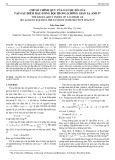
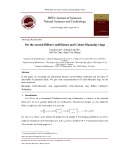
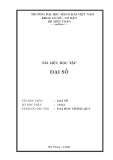
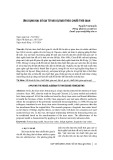
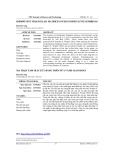
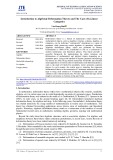
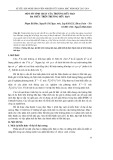
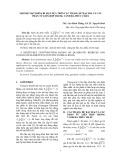
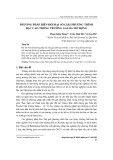










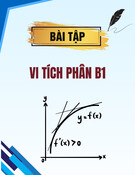



![Quyển ghi Xác suất và Thống kê [chuẩn nhất]](https://cdn.tailieu.vn/images/document/thumbnail/2025/20251030/anh26012006/135x160/68811762164229.jpg)
